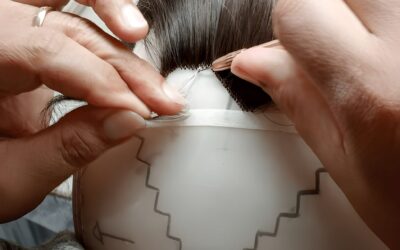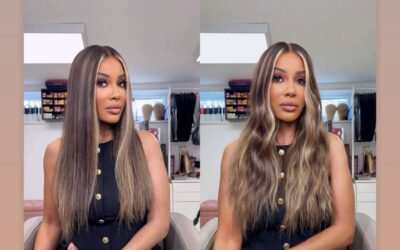If you’ve ever felt overwhelmed while shopping for a wig, especially when encountering terms like “130% density” or “180% density,” you’re not alone. The concept of “wig density” can seem confusing at first, but it’s one of the most important elements that determines how your wig will look, feel, and function.
Whether you’re new to wearing wigs or you’re looking to refine your style, understanding wig density can make all the difference. This guide will break down what wig density really means, how it differs from thickness, what levels are available, and how to make the right choice for your needs.
What Is Wig Density?
Wig density refers to the amount of hair that’s ventilated or sewn onto the wig cap. It doesn’t measure how thick each hair strand is—instead, it measures how closely the strands are placed together. Higher wig density means a fuller-looking wig; lower density means a lighter, more natural appearance.
The unit of measurement is typically expressed as a percentage, which corresponds to how full the wig appears compared to the average head of natural hair. For example, 100% wig density mimics the volume of a natural head of hair. Anything above 100% indicates fuller styles, while anything below may be used for a more subtle, lightweight look.
Common Wig Density Levels Explained
- 120-130% (Natural/Medium Density): Most commonly chosen density. It offers the perfect balance of volume and natural appearance.
- 150% (Full Density): Slightly fuller than natural density. Great for people who want added volume without looking too dramatic.
- 180% (Heavy Density): Offers noticeable fullness. Often used for glamorous, red-carpet styles, curls, and longer lengths.
Why Wig Density Matters
1. Aesthetic Impact
Wig density directly affects how your wig will look once it’s on your head. A low-density wig offers a natural, laid-back appearance. A high-density wig can create a bold, voluminous statement. Your wig density should match your personal style and intended use.
2. Styling Versatility
Higher-density wigs provide more hair to work with, making them great for elaborate styles such as updos, voluminous curls, and braids. Lower-density wigs are easier to manage and maintain but offer fewer styling options.
3. Comfort and Breathability
Heavier wigs can trap heat and feel bulky, especially during warmer seasons. Lighter wigs are more breathable and comfortable for all-day wear.
4. Hair Loss and Medical Needs
For individuals undergoing chemotherapy or living with alopecia, lightweight wigs with low to medium density are often more comfortable and natural-looking.
How to Choose the Right Wig Density for You
Choosing the perfect wig density depends on a combination of factors:
- Natural Hair Volume: Try to match your wig density to your natural hair if you’re aiming for a realistic look.
- Desired Hairstyle: Long and curly styles usually require higher density, while short and straight styles look great with lower densities.
- Lifestyle and Occasion: Daily wear? Opt for medium density. Special event? Go fuller.
- Head Shape and Size: More hair can sometimes overwhelm smaller head shapes.
- Climate: Hot climates? Consider a lighter density to avoid overheating.
Expert Tip:
If you’re new to wigs, start with 130% density. It offers flexibility, comfort, and a natural look. From there, you can experiment with fuller or lighter styles.
Wig Density vs Hair Thickness: What’s the Difference?
This is a common area of confusion. Hair thickness refers to the diameter of each individual strand of hair—fine, medium, or coarse. Wig density refers to the number of strands used per area on the cap.
You can have a wig with fine hair and high density (many fine strands), or thick hair and low density (fewer thick strands). Understanding this difference helps you better visualize the end result.
Wig Density by Hair Type
Different textures and styles affect how wig density appears:
- Straight Hair: Lays flat, so you might need higher density for a fuller look.
- Wavy Hair: Offers a natural bounce; medium density usually works well.
- Curly Hair: Appears naturally voluminous. You can go for lower density without sacrificing fullness.
Custom Wig Density at Miss Mama Wigs
At Miss Mama Wigs, we understand that every client is unique. That’s why we offer custom density options on most of our wigs. Whether you need a lightweight wig for everyday wear or a high-density piece for a special event, we’ve got you covered.
Every unit is made with 100% Remy human hair, ensuring longevity, softness, and natural movement.
Final Thoughts: Why Wig Density Should Never Be Overlooked
Wig density might seem like just another technical spec, but it significantly impacts the look, feel, and performance of your wig. Taking the time to understand wig density helps you make smarter choices, avoid discomfort, and achieve your hair goals with confidence.
So next time you shop, don’t overlook that little percentage number. Whether you want subtle, medium, or full-on glam, knowing your ideal wig density makes all the difference.




